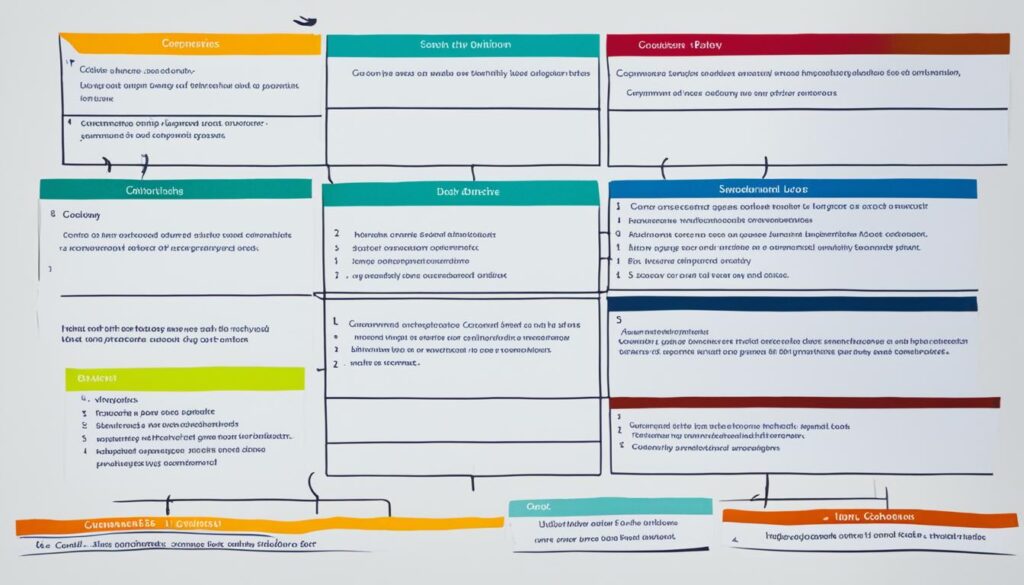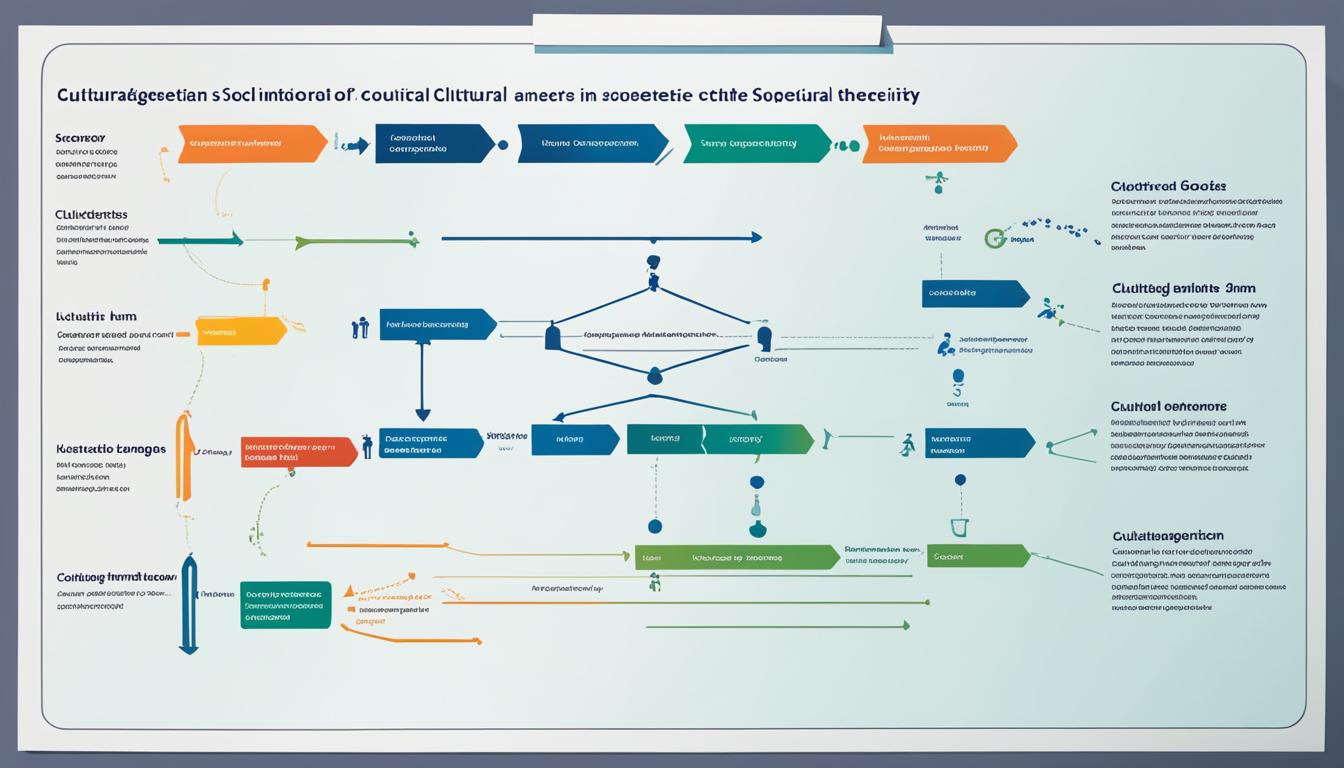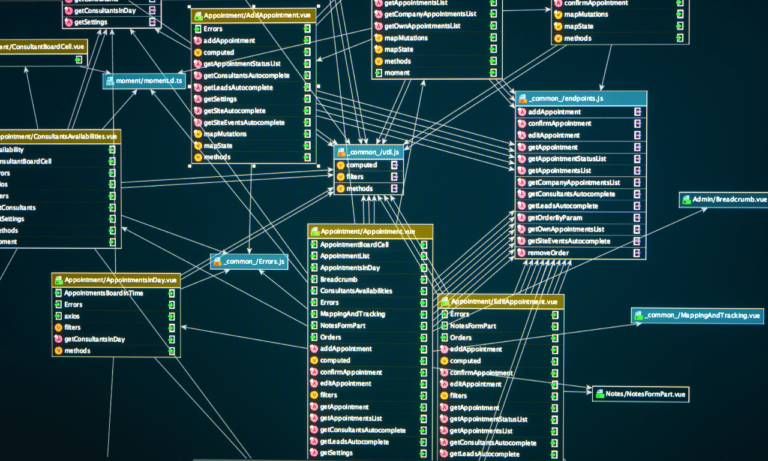Phone:
(+65)8319-0742
Delving into the complexities of human behavior and development, Cultural-Historical Activity Theory (CHAT) offers a comprehensive lens through which we can understand the intricate weaving of the mind with cultural and social experiences. Developed from the foundational work of Russian psychologists like Lev Vygotsky and expanded upon by scholars such as Michael Cole and Yrjö Engeström, CHAT provides a multifaceted approach to social learning and human development that continues to reverberate throughout the academic world.
At the heart of CHAT lies the conviction that human activities are anchored in a socio-cultural landscape, deeply influenced by historical context, and mediated through collective human action. By emphasizing tool-mediated learning and communication, engaging with the central importance of community in meaning-making, CHAT not only enriches our academic pursuits but also enhances practical approaches to developmental psychology.
Key Takeaways
- Cultural-Historical Activity Theory provides a robust framework for analyzing social learning processes and human development.
- CHAT stems from the groundbreaking theories of Lev Vygotsky and has been developed further through global academic exploration since the 1990s.
- The theory highlights the centrality of collective human action and cultural tools in mediating learning experiences.
- Understanding human behavior through CHAT requires consideration of both historical context and social mediation.
- Engeström and Cole have played significant roles in popularizing CHAT and applying it to various disciplines.
The Foundations of Cultural-Historical Activity Theory
Understanding the intricacies of developmental psychology within the context of Cultural-Historical Activity Theory (CHAT) begins with acknowledging its revolutionary roots. At its heart, CHAT represents a paradigm shift in recognizing that the human psyche doesn’t exist in isolation; rather, it is intricately tied to the mediation of mental functions through cultural tools. This insight was groundbreaking, contrasting starkly with the dominant behavioral focus that sidelined the nuanced interplay of internal and external influences on human development.
The groundwork for CHAT lay in embracing dialectical materialism and classical German philosophy’s profound impact on shaping psychology. This departure from more reductionist views opened up a new frontier where the human mind was seen not merely as a vehicle driven by predictable stimuli and responses but as an active participant in its evolution, utilizing the activity system it resides in. The concurrent relationship between society and individual cognition was emphasized, catalyzing a comprehensive view that included historical and cultural dynamics as key constituents of psychological development.
The initial frameworks of CHAT hinged on individual action being mediated through cultural symbols and artifacts. This mediation provides a potent doorway through which individuals interact with the world, transforming and being transformed. As activity theory matured, it expanded to encapsulate the concept of an activity systemâa dynamic, holistic network of components including subjects, tools, objects, rules, community, and division of labor.
| Component | Description |
|---|---|
| Subjects | Individuals or groups engaged in a given activity |
| Tools | Cultural Tools and signs that mediate the activity |
| Objects | Goals or motives toward which activity is directed |
| Rules | Norms and conventions shaping the conduct of activity |
| Community | The collective that shares the activity space with the subject |
| Division of Labor | Organization of tasks within the activity system |
Today, development across the lifespanâinstitutions, educational settings, and even personal identity formationâis often examined through the lens of CHAT. Far from a static theory, it offers a lived experience and a methodological tool for understanding developmental processes as they naturally unfold within and across cultural and historical contexts. It is not merely a reflective tool but mediates active engagement with the world, illustrating how cultures shape the tools we use and, subsequently, how these tools shape our psychological terrain.
Lev Vygotsky and the Birth of Cultural-Historical Activity Theory

The monumental contributions of Lev Vygotsky to the realm of developmental psychology remain a cornerstone of cultural-historical psychology. His seminal concepts of semiotic mediation and cultural mediation have profoundly shaped our understanding of how psychological processes are inseparable from the cultural and societal frameworks in which they develop.
The Mediating Role of Cultural Tools
In the matrix of Vygotsky’s legacy, the role of cultural tools embodies the mechanism through which individuals interact with their world, shaping their cognitive capabilities. The embodiment of semiotic mediation, through symbols and artifacts, forges a path for intellectual and cultural growth, presenting a framework that is essential to cultural-historical psychology.
Zone of Proximal Development and Sociocultural Contexts
The Zone of Proximal Development (ZPD) stands as one of Vygotsky’s most influential constructs, underscoring the dynamic interplay between a learner’s current abilities and their potential for cognitive advancement. This gap, bridged by the guidance of a more knowledgeable other or collaboration with peers, highlights the pivotal role of sociocultural contexts in learning processes and elucidates a core principle of sociocultural theory.
Vygotsky's Legacy and Influence on Sociocultural Theory
Despite his brief career, Vygotsky has left an enduring impact on the field of psychological processes in education and beyond. His insights into the social origins of mental functions established a foundation upon which contemporary sociocultural theory builds. The enduring relevance of Vygotskyâs work, especially his views on the complex interplay of language, thought, and cultural artifacts, continues to inspire and guide developmental psychology today.
Key Concepts of an Activity System in CHAT

The exploration of Cultural-Historical Activity Theory (CHAT) brings to the fore foundational components that drive the theory’s powerful analytical capabilities. At the core, it is the intricate interplay of artifacts, language, and consciousness through object-oriented action that provides insight into human behavior and societal developments.
Mediation: Artifacts, Language, and Consciousness
Mediated action is instrumental in CHAT, bridging the gap between internal thought processes and external socio-cultural components. Artifacts and language, both products of cultural evolution, mediate human interactions and contribute to the formation of consciousness. Understanding this mediation is key to decoding how individuals and groups engage with their environment and transform it.
The Triadic Structure: Subject, Object, and Tools
The Triadic structure of CHAT presents a dynamic model where the subject (the individual or group) partakes in an activity directed towards an object (the goal or intended outcome) through the use of tools (both physical and psychological instruments). This model is paramount in dissecting how activities are structured and executed within various social settings.
Interplay of Community, Rules, and Division of Labor
The layers of an activity system do not cease at mere interaction; they extend into the broader community, including established rules and division of labor. These elements work symbiotically to create the rich fabric of social structures, where each aspect influences and reshapes the others, forming a cohesive yet dynamic whole essential to the analytics of CHAT.
| Component | Description | Role in Activity System |
|---|---|---|
| Artifacts | Cultural products that mediate action | Facilitating communication and cognitive processes |
| Language | A symbolic system enabling interaction | Conveying and shaping thought, linking subject and community |
| Consciousness | Awareness shaped by cultural tools | Driving purposeful, object-oriented action |
| Community | The social context in which activity occurs | Providing cultural norms and collective expectations |
| Rules | Explicit and implicit regulations guiding action | Structuring interactions and defining boundaries |
| Division of Labor | Allocation of roles and responsibilities within the community | Distributing tasks and authority, influencing individual and collective activities |
The Evolution and Spread of Cultural-Historical Activity Theory

As Cultural-Historical Activity Theory (CHAT) began its journey westward, it brought with it a revolutionary lens for sociocultural analysis, profoundly impacting both organizational development and educational practices. The transfer of insights from Soviet psychologists opened doors to new methodologies and innovative perspectives across various disciplines.
The wide-reaching influence of CHAT is perhaps most evident in the realm of organizational development. Here, the theory has instigated new strategies for tackling workplace dynamics, enhancing collaborative efforts, and fostering an environment of continuous improvement and adaptation. Institutions such as Engeström’s Center for Research on Activity, Development, and Learning (CRADLE) in Helsinki, and Cole’s Laboratory of Comparative Human Cognition (LCHC) based in San Diego, have been instrumental in integrating CHAT into concrete frameworks for analyzing and developing organizational structures.
In the context of educational practices, CHAT has empowered educators to reconfigure teaching methods, curriculum design, and learning environments. By fusing sociocultural analysis with a focus on mediated learning, practitioners can now build curricula that not only transmit knowledge but also engage students in the co-construction of their learning journeys.
- Infusion of CHAT in educational practices facilitates a collaborative learning atmosphere.
- Application in organizational development enables the identification and resolution of systemic contradictions.
- Sociocultural analysis offers a comprehensive understanding of the influence of cultural and historical factors within learning and organizational systems.
As the reach of Cultural-Historical Activity Theory extends, its foundational principles continue to inspire cross-disciplinary collaboration, yielding robust insights into the complex tapestry of human interaction, learning, and organizational evolution.
Engeström's Expansion: The Three Generations of CHAT
Understanding the evolution of Cultural-Historical Activity Theory (CHAT) is crucial for grasping its impact on various fields of study. Yrjö Engeström’s influential work has expanded the theory into three distinct generations. Each generation builds upon the insights of its predecessors, adding layers of complexity and analytical power to CHAT’s framework for interpreting human interaction and societal development.
First Generation: Individual and Mediated Action
The conception of First generation CHAT centered around the individual and the concept of mediated actions, with tools serving as the pivotal means for subject-object interactions. This perspective is instrumental in analyzing how an individual’s culture and the use of artifacts play a role in cognitive development.
Second Generation: Collective Perspective on Activity Systems
Moving beyond individual cognition, Second generation CHAT, influenced by the work of Aleksei N. Leontiev, acknowledges the social context of activities. This theory promotes the understanding of collective activity and how interconnected actions within an activity system coalesce to shape communal and cultural progression.
Third Generation: Multiple Interacting Systems and Boundary Crossings
Third generation CHAT invites us into a realm where multiple activity systems intersect. This generation explores the boundary-crossing dynamics between different systems, accentuating the complexity of cooperative efforts and shared objectives in broader collective activities.
| Generation | Focus | Contribution | Key Concept |
|---|---|---|---|
| First | Individual cognition | Understanding mediated actions through tools | Mediated Actions |
| Second | Collective activity | Networks of interrelated actions within systems | Collective Activity |
| Third | Systemic interactions | Boundary-crossing between multiple systems | Interacting Systems |
Practical Applications and Interdisciplinary Reach of CHAT
As an analytical framework, Cultural-Historical Activity Theory (CHAT) has considerably broadened its influence, permeating a diverse range of disciplines and practices. In the contemporary domain of professional practice, its principles and methodologies have been innovatively applied, carving a niche across various sectors. What follows is an exploration of how CHAT applications are shaping organizational development, educational practices, and more.
CHAT in Organizational Development and Educational Practices
In the domain of organizational development, CHAT has emerged as a powerful lens through which systemic incongruities are identified and addressed. By scrutinizing the triadic relationship between subjects, instruments, and community, practitioners can spot and resolve conflicting components within the organizational setting. Similarly, in educational practices, this theory offers a robust scaffold for understanding collaborative and interactive learning, thus refining pedagogical strategies to be more conducive to collective growth.
Cultural-Historical Activity Theory in Human Services and Healthcare
The application of CHAT within human services and healthcare is pivotal. By considering the socio-historic trajectory of both the provider and the client, professionals in these fields can employ CHAT as a comprehensive tool for evaluating and enhancing service delivery. Importantly, the theory advocates for understanding the complex tapestry of influences that shape social work practices and patient-provider relationships.
Technology Design and Human-Computer Interaction via Activity Theory
Lastly, CHAT plays a transformative role in technology design and human-computer interaction. It extends beyond usability to foster the creation of tools that deeply resonate with human activities and contexts. Through activity theory, designers can craft interfaces that not only serve functional purposes but also complement and enhance user experience.
| Field | Application of CHAT | Expected Outcome |
|---|---|---|
| Organizational Development | Address systemic contradictions | Increased efficiency and coherence |
| Educational Practices | Framework for collective learning | Enhanced learning environments |
| Human Services and Healthcare | Analysis of professional-client interactions | Improved service delivery |
| Technology Design and HCI | User-centered development | Intuitive and engaging interfaces |
Conclusion
The exploration of Cultural-Historical Activity Theory (CHAT) uncovers a complex tapestry woven with the fundamental components of human development and social learning within sociohistorical contexts. As CHAT elucidates the intricate interplay between individual agency and cultural-historical influences, it stands as a testament to the dynamic nature of theory and practice intertwining to foster greater understanding. The insights derived from CHAT do not just fill pages of academic discourse; they actively shape the pedagogical, organizational, and technological landscapes by providing robust frameworks for real-world application.
Reflecting on the journey from Vygotsky’s seminal triangulation of mind, culture, and society to Engeströmâs generational expansions, it’s evident that CHAT has maturely evolved while staying true to its core principles. Adhering to the very fabric of its constitution, CHAT continues to adapt and transform, offering activity theory insights that transcend disciplinary boundaries. This adaptability not only highlights the versatility of CHAT but also ensures its relevance and application remain at the forefront of human development research and practice.
As we consider the future trajectories of CHAT, the theory’s inherent recognition of contradiction as a catalyst for change promises further advancements and an even richer integration of sociohistorical perspectives into the understanding of human activities. The continuum of CHAT research and application is a vivid narration of the theoryâs capacity to evolve, as it integrates and redefines its conceptual toolkit to meet the needs of an ever-changing world.
FAQ
What is Cultural-Historical Activity Theory (CHAT)?
Cultural-Historical Activity Theory, or CHAT, is a theoretical framework that analyzes complex human behaviors and cognitive development. It links the mind to activity within the context of societal and cultural experiences by considering the integral role of historical development, social contexts, and tools in shaping human consciousness and actions.
Who developed the Cultural-Historical Activity Theory?
CHAT was developed by Russian psychologist Lev Vygotsky and further expanded by his student Aleksei N. Leontiev. The framework was later broadened and popularized by scholars such as Michael Cole and Yrjö Engeström, who contributed to its wide international recognition in academic circles.
How do cultural tools mediate human activity?
Cultural tools, including language, art, and technology, mediate human activity by shaping the ways individuals interact with their environment. These tools act as intermediaries through which social understanding and cognitive development take place, and influence how people perceive and act upon the world around them.
What is the Zone of Proximal Development (ZPD)?
The Zone of Proximal Development is a concept introduced by Vygotsky that describes the difference between what a learner can do without help versus what they can achieve with guidance and encouragement from a skilled partner. This concept emphasizes the critical role of social interaction in the learning process and human cognitive development.
What are the key components of an Activity System in CHAT?
The key components of an Activity System in CHAT include the subject (the person or group engaged in an activity), the objects (goals or motives), and the tools (physical and symbolic tools used). This system also considers the community context, the rules that govern actions within the community, and the division of labor, illustrating the socially situated nature of human activity.
How has Cultural-Historical Activity Theory evolved over time?
CHAT has evolved through three generations: the first generation focuses on individual mediated action; the second expands to collective activities within an activity system; and the third explores multiple interacting activity systems, their shared objectives, and the boundary-crossings between these systems.
What are some practical applications of CHAT?
CHAT has been applied in a range of contexts, including organizational development, educational practices, human services, healthcare, and technology design. It provides a comprehensive framework that can help understand and improve social interactions and activities in various professional and academic fields.

















